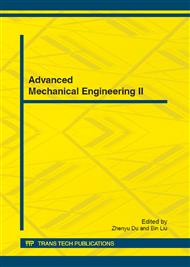p.128
p.132
p.139
p.144
p.149
p.154
p.159
p.164
p.169
Research on Integrated and Portable Weigh-in-Motion Scale
Abstract:
The integrated dynamic weighing scale with a high accuracy was developed based on analyzing the loads when vehicles passed on the weighing scale. The ANSYS software was applied to determine the sensor’s foil strain gauge position and the dynamic characteristic was verified through the experiment; meanwhile the hardware and measuring software in the system were simply introduced in this article. Finally through the experiments the Weigh-In-Motion (WIM) system can be used in traffic data collection and is assistant tool for overload check.
Info:
Periodical:
Pages:
149-153
Citation:
Online since:
July 2012
Authors:
Price:
Сopyright:
© 2012 Trans Tech Publications Ltd. All Rights Reserved
Share:
Citation:


